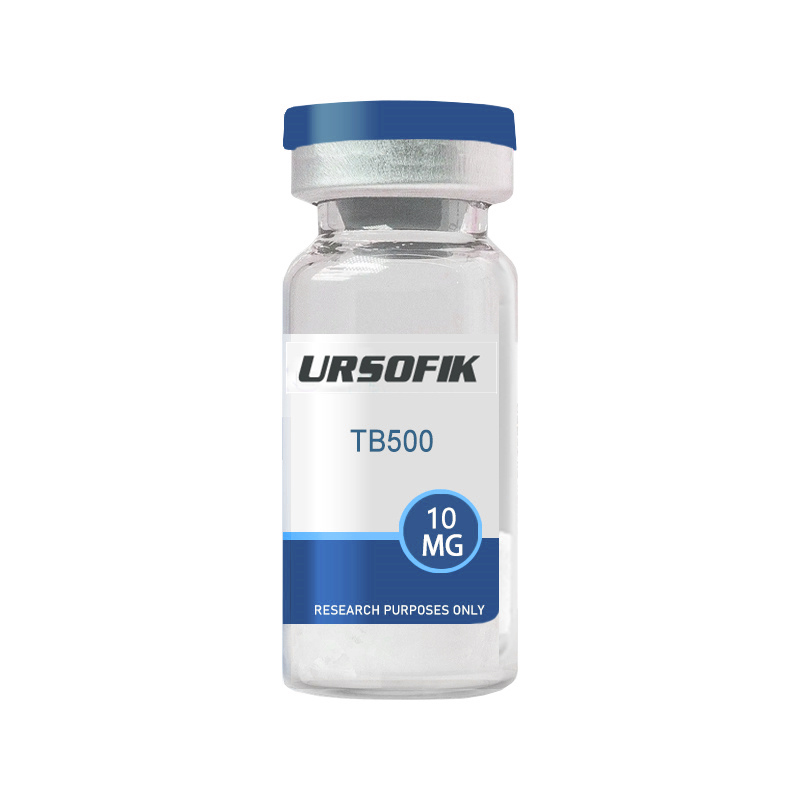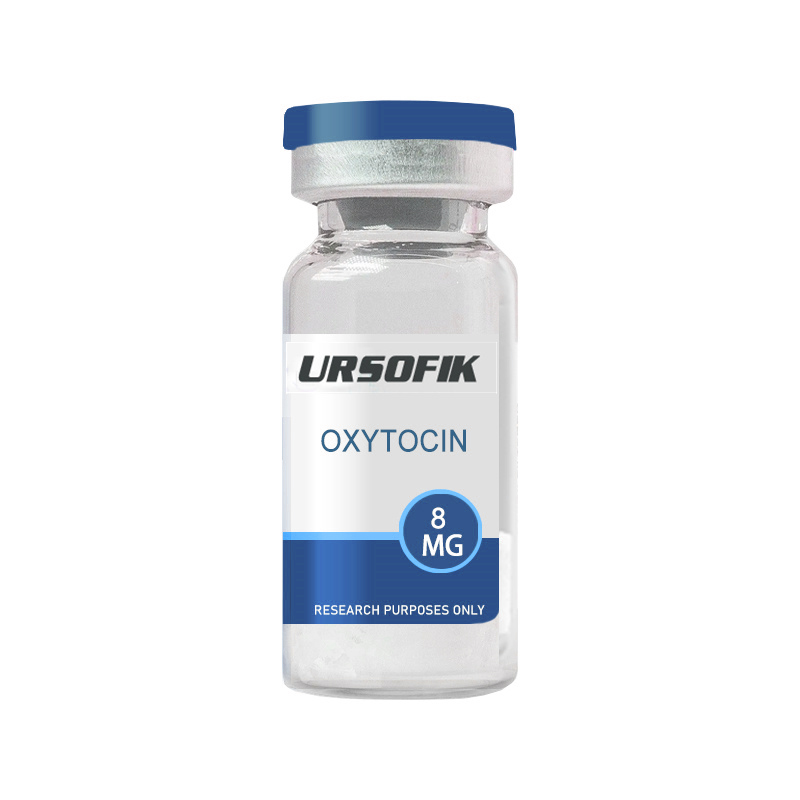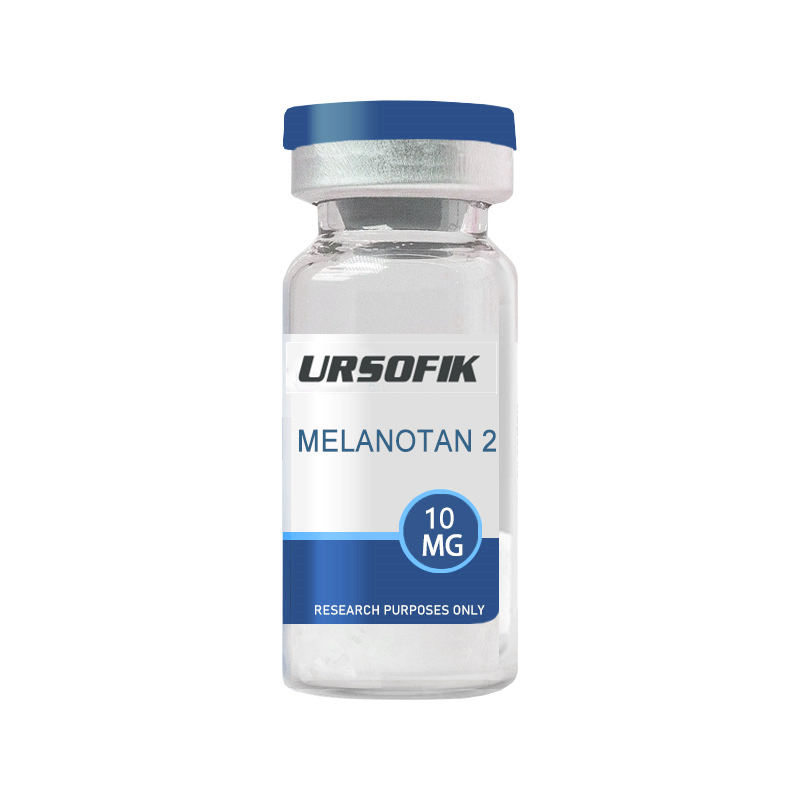

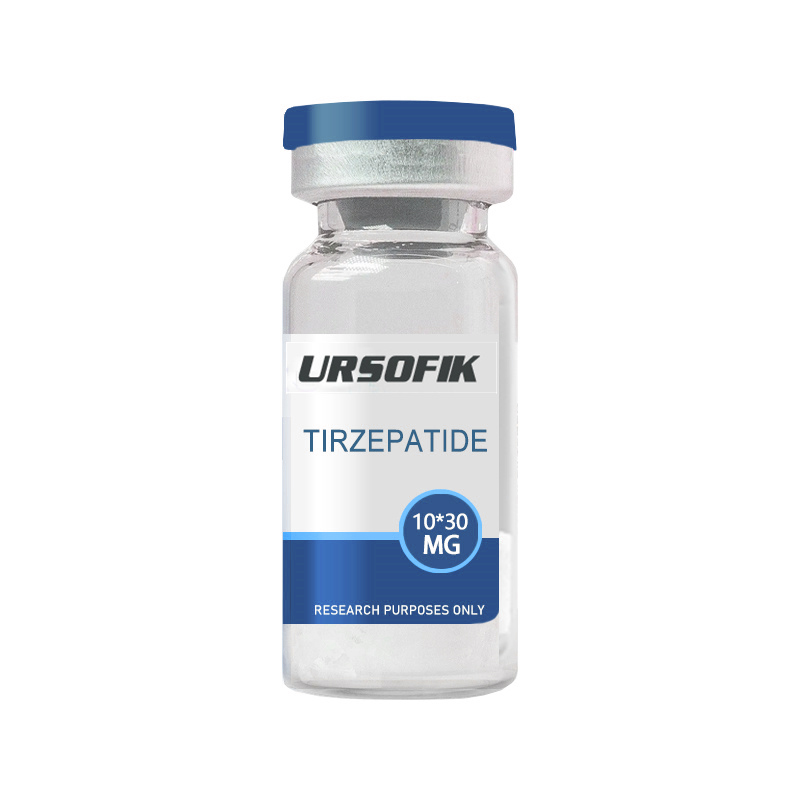
What is Tirzepatide? Tirzepatide is a synthetic peptide that acts as a dual agonist at the glucose-dependent insulin secretagogue polypeptide (GIP) and glucagon-like peptide-1 (GLP-1) receptors. The compound has been studied for its potential to affect glucose regulation and energy balance. Researchers are particularly interested in Tirzepatide because of its potential role in treating metabolic disorders, including those associated with insulin resistance and excess weight. How does Tirzepatide work? Tirzepatide is designed to activate both GIP and GLP-1 receptors, which are involved in regulating insulin secretion and glucose homeostasis. By stimulating these receptors, Tirzepatide can enhance insulin secretion in response to elevated blood glucose, inhibit glucagon release, and slow gastric emptying. In addition, this dual agonist effect may help reduce appetite and caloric intake by acting on receptors within the central nervous system, which may be beneficial for weight management. What are the potential benefits of Tirzepatide? Research suggests that Tirzepatide may offer several potential benefits: Improved blood sugar control: Tirzepatide may help reg ...
Read More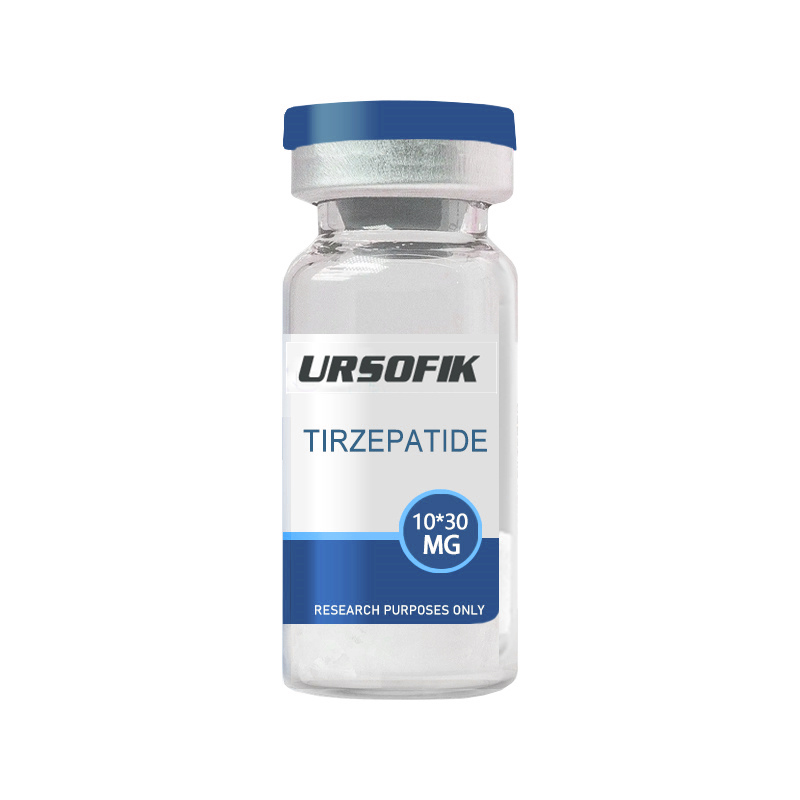
What is Tirzepatide? Tirzepatide is a synthetic peptide that acts as a dual agonist at the glucose-dependent insulin secretagogue polypeptide (GIP) and glucagon-like peptide-1 (GLP-1) receptors. The compound has been studied for its potential to affect glucose regulation and energy balance. Researchers are particularly interested in Tirzepatide because of its potential role in treating metabolic disorders, including those associated with insulin resistance and excess weight. How does Tirzepatide work? Tirzepatide is designed to activate both GIP and GLP-1 receptors, which are involved in regulating insulin secretion and glucose homeostasis. By stimulating these receptors, Tirzepatide can enhance insulin secretion in response to elevated blood glucose, inhibit glucagon release, and slow gastric emptying. In addition, this dual agonist effect may help reduce appetite and caloric intake by acting on receptors within the central nervous system, which may be beneficial for weight management. What are the potential benefits of Tirzepatide? Research suggests that Tirzepatide may offer several potential benefits: Improved blood sugar control: Tirzepatide may help reg ...
Read More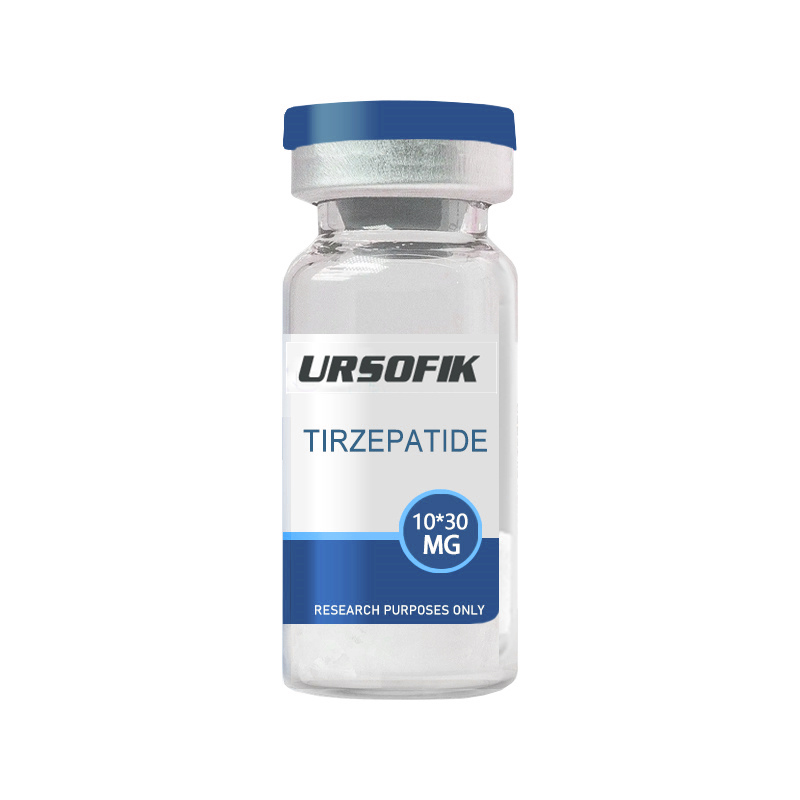
What is Tirzepatide? Tirzepatide is a synthetic peptide that acts as a dual agonist at the glucose-dependent insulin secretagogue polypeptide (GIP) and glucagon-like peptide-1 (GLP-1) receptors. The compound has been studied for its potential to affect glucose regulation and energy balance. Researchers are particularly interested in Tirzepatide because of its potential role in treating metabolic disorders, including those associated with insulin resistance and excess weight. How does Tirzepatide work? Tirzepatide is designed to activate both GIP and GLP-1 receptors, which are involved in regulating insulin secretion and glucose homeostasis. By stimulating these receptors, Tirzepatide can enhance insulin secretion in response to elevated blood glucose, inhibit glucagon release, and slow gastric emptying. In addition, this dual agonist effect may help reduce appetite and caloric intake by acting on receptors within the central nervous system, which may be beneficial for weight management. What are the potential benefits of Tirzepatide? Research suggests that Tirzepatide may offer several potential benefits: Improved blood sugar control: Tirzepatide may ...
Read More
What is Tirzepatide? Tirzepatide is a synthetic peptide that acts as a dual agonist at the glucose-dependent insulin secretagogue polypeptide (GIP) and glucagon-like peptide-1 (GLP-1) receptors. The compound has been studied for its potential to affect glucose regulation and energy balance. Researchers are particularly interested in Tirzepatide because of its potential role in treating metabolic disorders, including those associated with insulin resistance and excess weight. How does Tirzepatide work? Tirzepatide is designed to activate both GIP and GLP-1 receptors, which are involved in regulating insulin secretion and glucose homeostasis. By stimulating these receptors, Tirzepatide can enhance insulin secretion in response to elevated blood glucose, inhibit glucagon release, and slow gastric emptying. In addition, this dual agonist effect may help reduce appetite and caloric intake by acting on receptors within the central nervous system, which may be beneficial for weight management. What are the potential benefits of Tirzepatide? Research suggests that Tirzepatide may offer several potential benefits: Improved blood sugar control: Tirzepatide may ...
Read More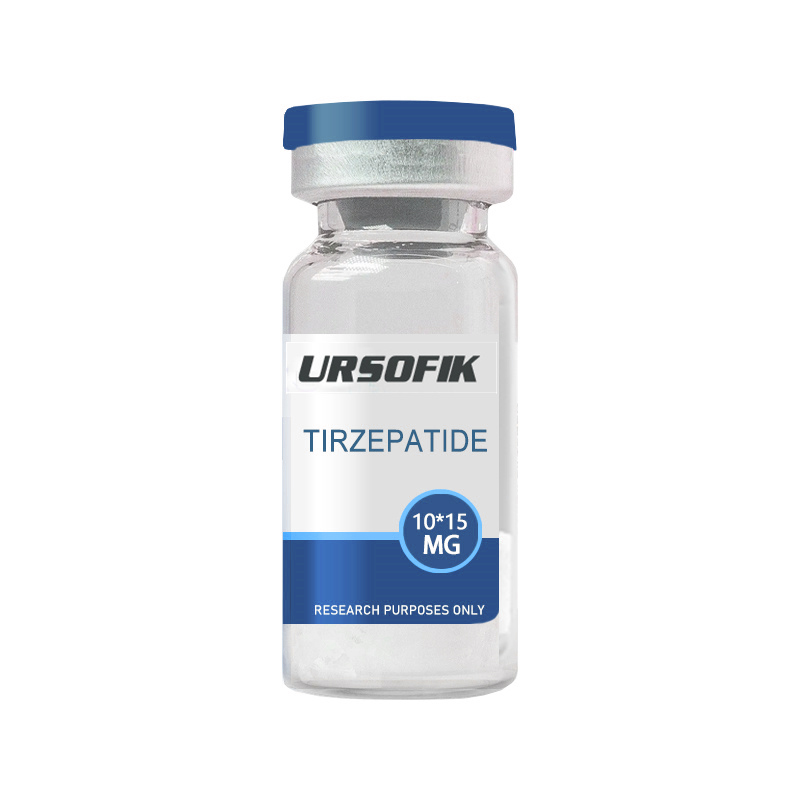
What is Tirzepatide? Tirzepatide is a synthetic peptide that acts as a dual agonist at the glucose-dependent insulin secretagogue polypeptide (GIP) and glucagon-like peptide-1 (GLP-1) receptors. The compound has been studied for its potential to affect glucose regulation and energy balance. Researchers are particularly interested in Tirzepatide because of its potential role in treating metabolic disorders, including those associated with insulin resistance and excess weight. How does Tirzepatide work? Tirzepatide is designed to activate both GIP and GLP-1 receptors, which are involved in regulating insulin secretion and glucose homeostasis. By stimulating these receptors, Tirzepatide can enhance insulin secretion in response to elevated blood glucose, inhibit glucagon release, and slow gastric emptying. In addition, this dual agonist effect may help reduce appetite and caloric intake by acting on receptors within the central nervous system, which may be beneficial for weight management. What are the potential benefits of Tirzepatide? Research suggests that Tirzepatide may offer several potential benefits: Improved blood sugar control: Tirzepatide may ...
Read More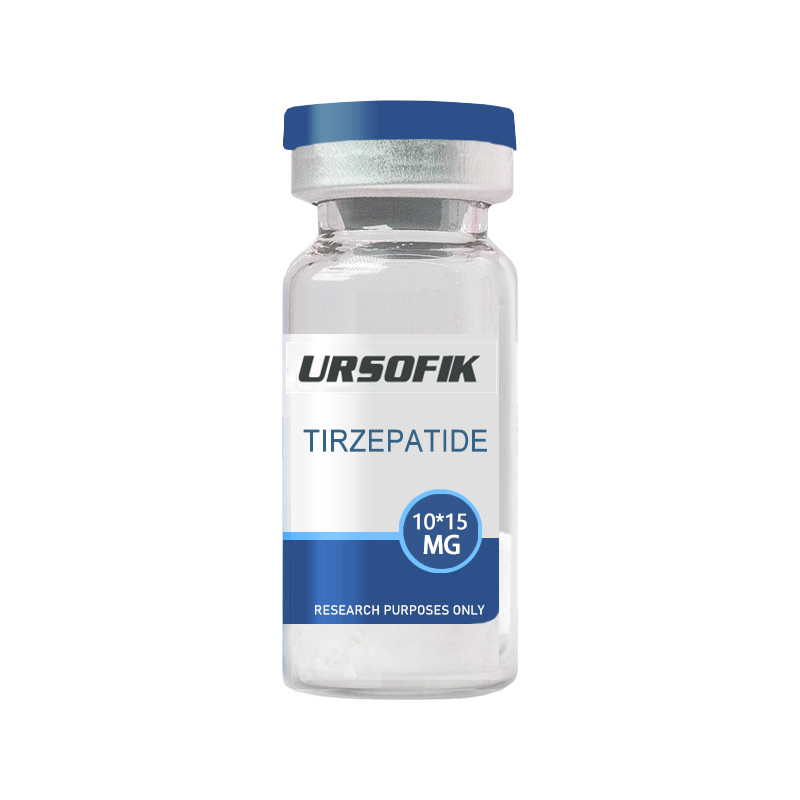
What is Tirzepatide? Tirzepatide is a synthetic peptide that acts as a dual agonist at the glucose-dependent insulin secretagogue polypeptide (GIP) and glucagon-like peptide-1 (GLP-1) receptors. The compound has been studied for its potential to affect glucose regulation and energy balance. Researchers are particularly interested in Tirzepatide because of its potential role in treating metabolic disorders, including those associated with insulin resistance and excess weight. How does Tirzepatide work? Tirzepatide is designed to activate both GIP and GLP-1 receptors, which are involved in regulating insulin secretion and glucose homeostasis. By stimulating these receptors, Tirzepatide can enhance insulin secretion in response to elevated blood glucose, inhibit glucagon release, and slow gastric emptying. In addition, this dual agonist effect may help reduce appetite and caloric intake by acting on receptors within the central nervous system, which may be beneficial for weight management. What are the potential benefits of Tirzepatide? Research suggests that Tirzepatide may offer several potential benefits: Improved blood sugar control: Tirzepatide may ...
Read More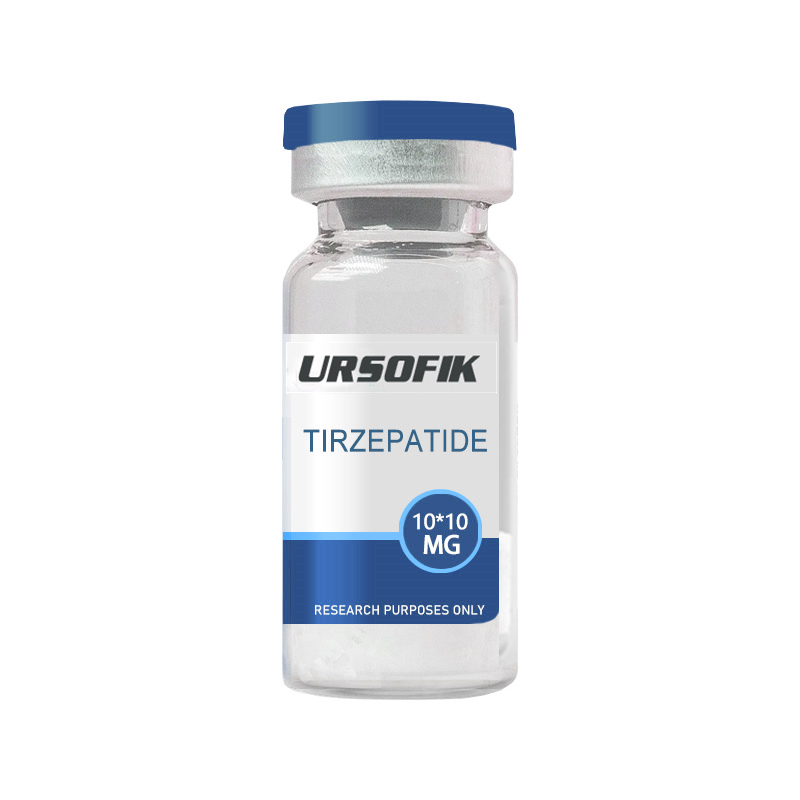
What is Tirzepatide? Tirzepatide is a synthetic peptide that acts as a dual agonist at the glucose-dependent insulin secretagogue polypeptide (GIP) and glucagon-like peptide-1 (GLP-1) receptors. The compound has been studied for its potential to affect glucose regulation and energy balance. Researchers are particularly interested in Tirzepatide because of its potential role in treating metabolic disorders, including those associated with insulin resistance and excess weight. How does Tirzepatide work? Tirzepatide is designed to activate both GIP and GLP-1 receptors, which are involved in regulating insulin secretion and glucose homeostasis. By stimulating these receptors, Tirzepatide can enhance insulin secretion in response to elevated blood glucose, inhibit glucagon release, and slow gastric emptying. In addition, this dual agonist effect may help reduce appetite and caloric intake by acting on receptors within the central nervous system, which may be beneficial for weight management. What are the potential benefits of Tirzepatide? Research suggests that Tirzepatide may offer several potential benefits: Improved blood sugar control: Tirzepatide ...
Read More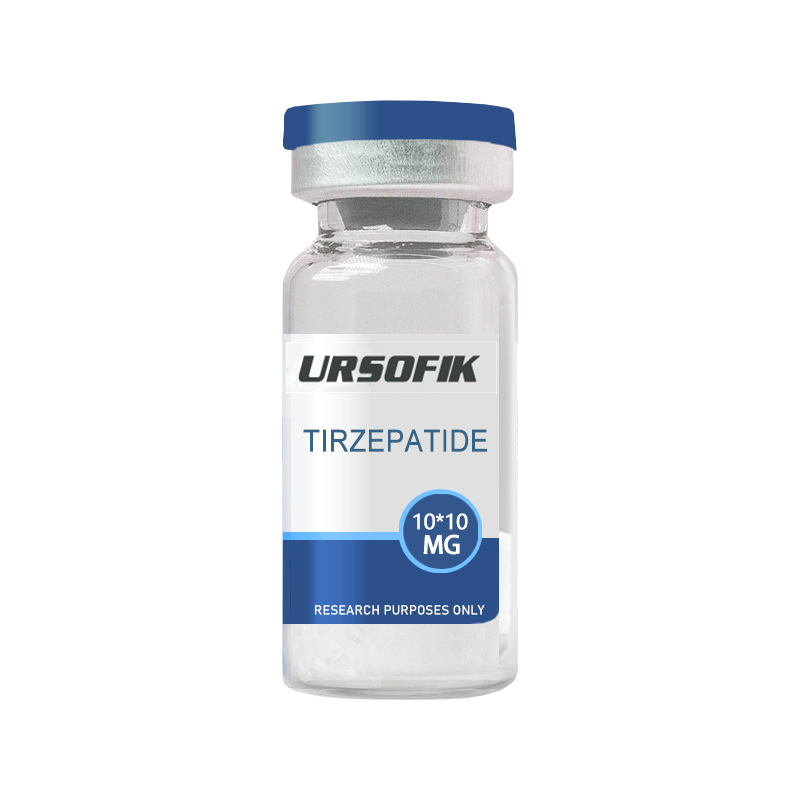
What is Tirzepatide? Tirzepatide is a synthetic peptide that acts as a dual agonist at the glucose-dependent insulin secretagogue polypeptide (GIP) and glucagon-like peptide-1 (GLP-1) receptors. The compound has been studied for its potential to affect glucose regulation and energy balance. Researchers are particularly interested in Tirzepatide because of its potential role in treating metabolic disorders, including those associated with insulin resistance and excess weight. How does Tirzepatide work? Tirzepatide is designed to activate both GIP and GLP-1 receptors, which are involved in regulating insulin secretion and glucose homeostasis. By stimulating these receptors, Tirzepatide can enhance insulin secretion in response to elevated blood glucose, inhibit glucagon release, and slow gastric emptying. In addition, this dual agonist effect may help reduce appetite and caloric intake by acting on receptors within the central nervous system, which may be beneficial for weight management. What are the potential benefits of Tirzepatide? Research suggests that Tirzepatide may offer several potential benefits: Improved blood sugar control: Tirzepatide may ...
Read More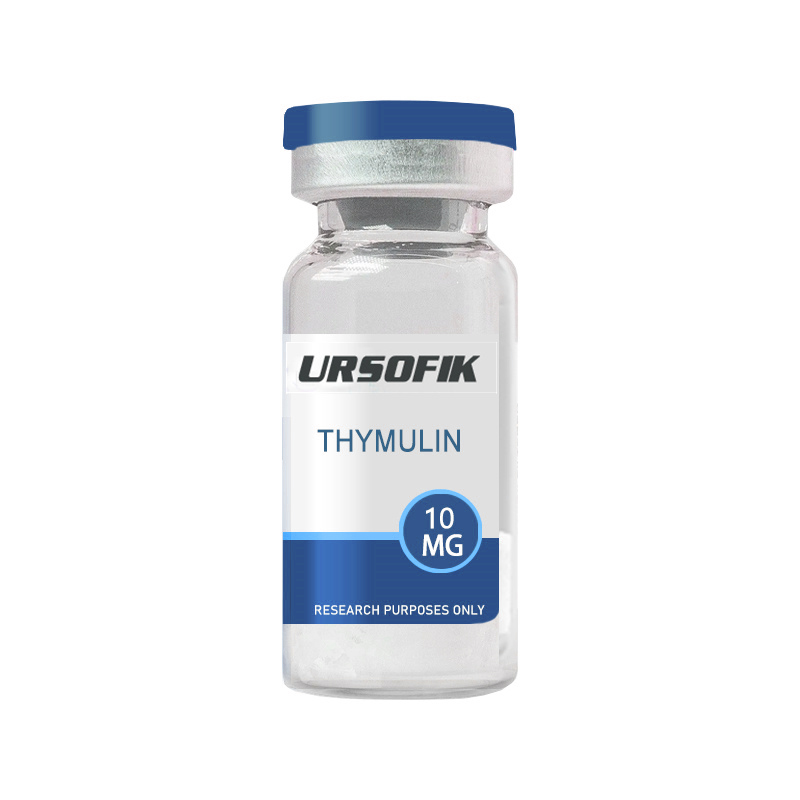
Structure Sequence: Glu-Ala-Lys-Ser-GIn-Gly-Gly-Ser-Asn Molecular formula: C 33 H 54 N 12 O 15 Peptide purity: greater than 98% Additional details: TFA-free, mannitol-free Storage: This product must be stored at 4°C. Not suitable for freezing. Zinc-thymol is for external use only Description Hair loss occurs in a large proportion of the adult population and increases with age. Both men and women can experience hair loss, but it is more common in men. In the West, an estimated 50% of men will experience noticeable hair loss before the age of 50. The most common form of hair loss in men is androgenic alopecia (male pattern baldness). Most hair loss is due to follicular inactivation, which means that the follicles stop growing hair. Literature also suggests that with aging, the fat layer of the scalp thins, leading to the inactivation of stem cells that regulate hair growth, which can lead to hair loss. Zinc deficiency can also lead to hair loss. Thymosin is a nonapeptide from the thymus gland. Zinc and thymosin are two natural compounds involved in hair follicle growth that have been found to promote hair growth. Early reports of thymus extracts stimulating ...
Read More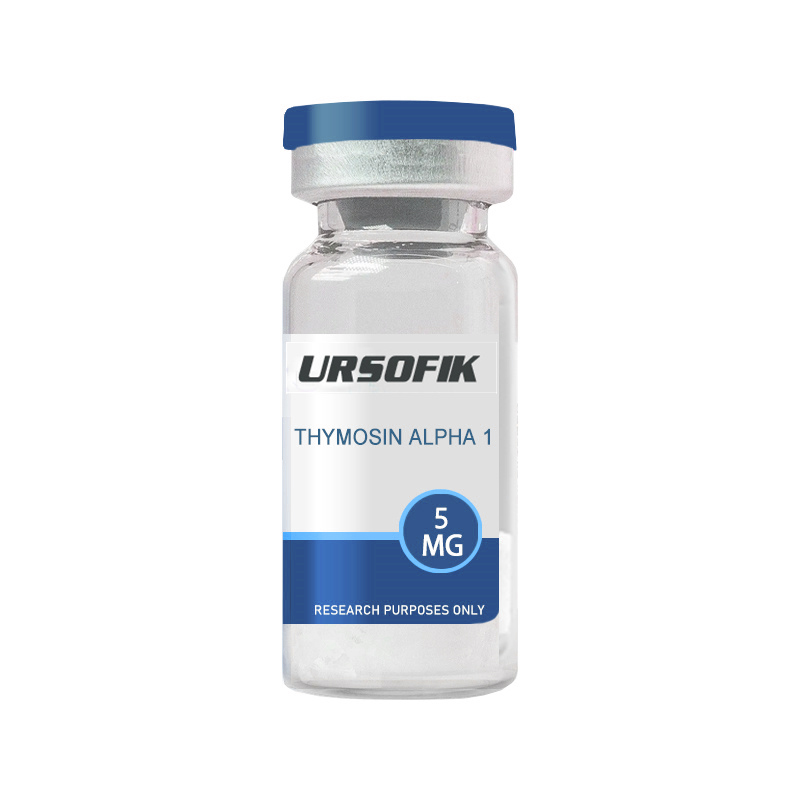
What is Thymosin Alpha 1? Thymosin Alpha 1, also known as TA1, is a 28 amino acid peptide. It is naturally produced and isolated from the human thymus, a small gland that makes and trains immune cells (T-cells). The T-cells help your immune system fight disease and infection. Thymosin Alpha 1 was first isolated from the calf thymus in 1977. Since then, two additional methods have been developed to extract this peptide from its source. These include solid-state synthesis (the popular method) and genetic engineering processes. Like the source (thymus) from which it is isolated, TA1 possesses the ability to enhance, restore and modify your immune response. It has also shown promise in various clinical applications, including viral, fungal, and bacterial infectious diseases and cancer. Recent research has indicated that TA1 might be used for the treatment of severe sepsis. The peptide has also been reported to prevent invasive infections in bone-marrow transplanted patients. In clinical studies, it has displayed promise as a vaccine adjuvant. How does Thymosin Alpha 1 Work? Thymosin Alpha 1 has a dual mechanism of action: Immune Modulating Effect Thymosin A ...
Read More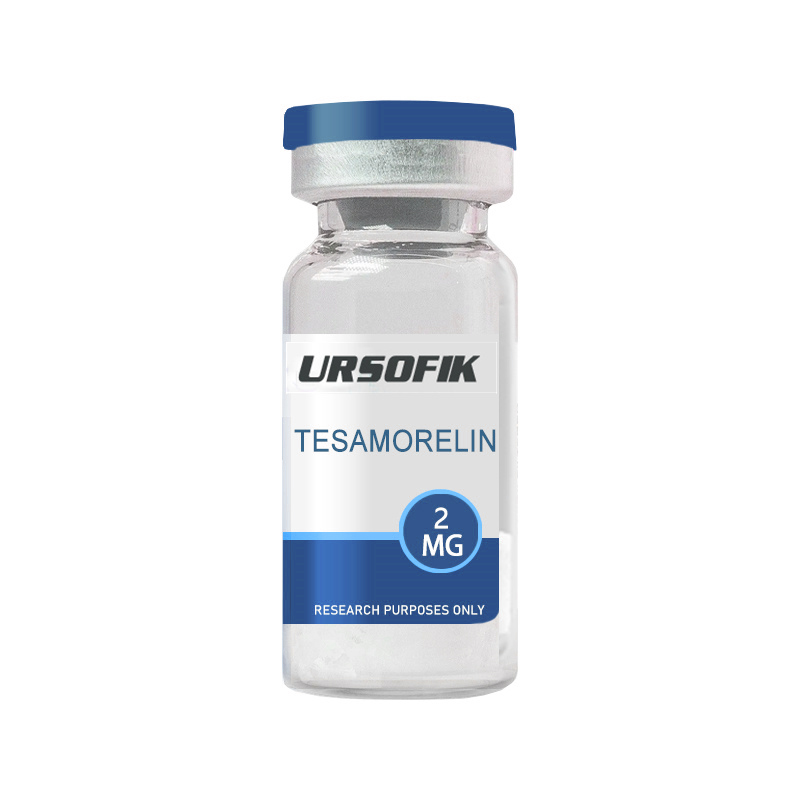
What is Tesamorelin? Tesamorelin is a stabilized synthetic analogue of Growth Hormone Releasing Hormone (GHRH),not specifically from the hypothalamus, used for the reduction of excess abdominal fat in HIV-patients with lipodystrophy. Lipodystrophy is a metabolic condition often associated with insulin resistance, fat redistribution, and hyperlipidemia associated with antiretroviral therapy for the treatment of HIV infection. Mechanism of Action Tesamorelin works by mimicking the natural Growth Hormone Releasing Hormone, stimulating the pituitary gland to release more growth hormone. This increase in growth hormone leads to various metabolic effects, majorly the reduction of excess abdominal fat, and helps improve body composition. By binding to GHRH, Tesamorelin causes a series of physiological reactions that result in a reduction of visceral fat in the abdominal area. Potential Benefits of Tesamorelin The following are the benefits of Tesamorelin: Fat loss and improvement in body composition: One of the well-known benefits of tesamorelin is the visceral fat reduction. Research shows that tesamorelin may help in the reduction of excess abdominal fat and also help improve the body composit ...
Read More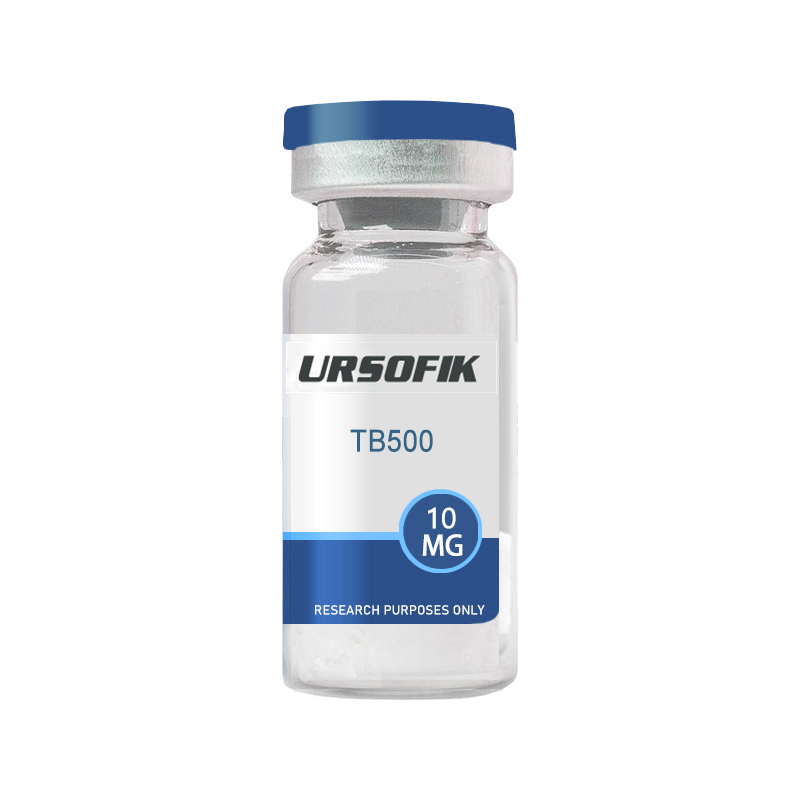
What is TB-500? TB-500 is a 43 amino acid synthetic analog of thymosin B-4 (TB-4), which occurs naturally in nearly all mammalian cells. TB-500 is known for its effects on actin, cell migration, and wound healing. Animal models and in vitro studies have shown that TB-500 can improve blood vessel growth, accelerate wound healing, reduce inflammation, and promote production of extracellular matrix. The peptide is currently being studied for its ability to reduce oxidative stress in spinal cord injuries, improve recovery after heart attacks, and have a variety of anti-aging effects. TB-500 Mechanism of Action TB-500 is the active domain of TB-4 and primarily acts as an actin-binding protein. Actin is an important component of cellular structure and makes up microfilaments. Microfilaments are responsible for giving cells their shape, protecting the integrity of cell membranes, allowing cells to move/migrate, and certain steps in cell reproduction. Actin is also one of the main components of muscle protein. Without actin, muscles cannot contract. Actin-binding proteins such as TB-4 sequester actin monomers (single units of actin), thereby protecting them from degradation and allowing them to polymerize into microfil ...
Read More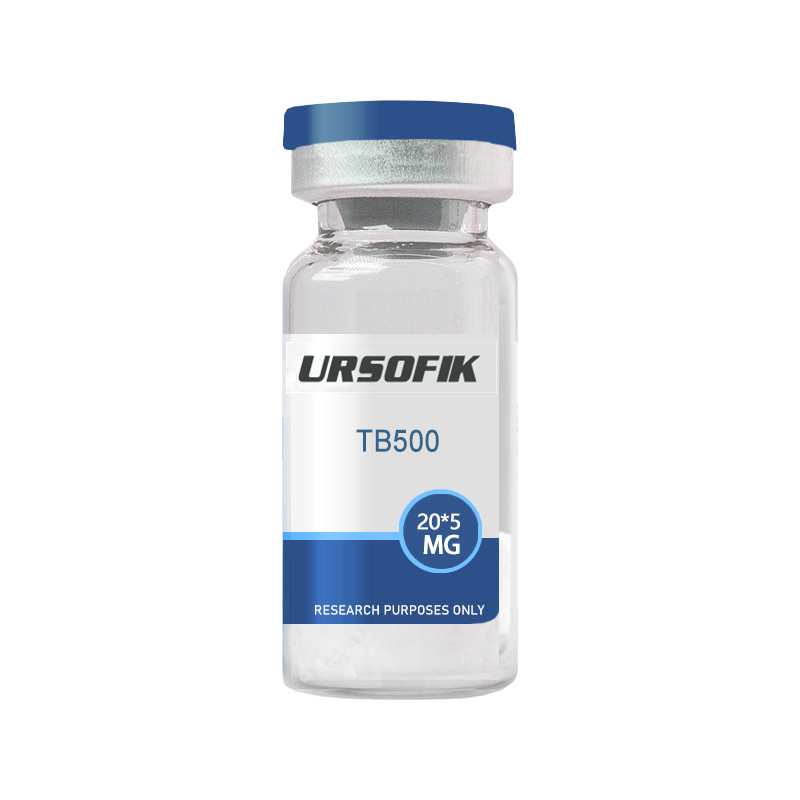
What is TB-500? TB-500 is a 43 amino acid synthetic analog of thymosin B-4 (TB-4), which occurs naturally in nearly all mammalian cells. TB-500 is known for its effects on actin, cell migration, and wound healing. Animal models and in vitro studies have shown that TB-500 can improve blood vessel growth, accelerate wound healing, reduce inflammation, and promote production of extracellular matrix. The peptide is currently being studied for its ability to reduce oxidative stress in spinal cord injuries, improve recovery after heart attacks, and have a variety of anti-aging effects. TB-500 Mechanism of Action TB-500 is the active domain of TB-4 and primarily acts as an actin-binding protein. Actin is an important component of cellular structure and makes up microfilaments. Microfilaments are responsible for giving cells their shape, protecting the integrity of cell membranes, allowing cells to move/migrate, and certain steps in cell reproduction. Actin is also one of the main components of muscle protein. Without actin, muscles cannot contract. Actin-binding proteins such as TB-4 sequester actin monomers (single units of actin), thereby protecting them from degradation and allowing them to polymerize into microfil ...
Read More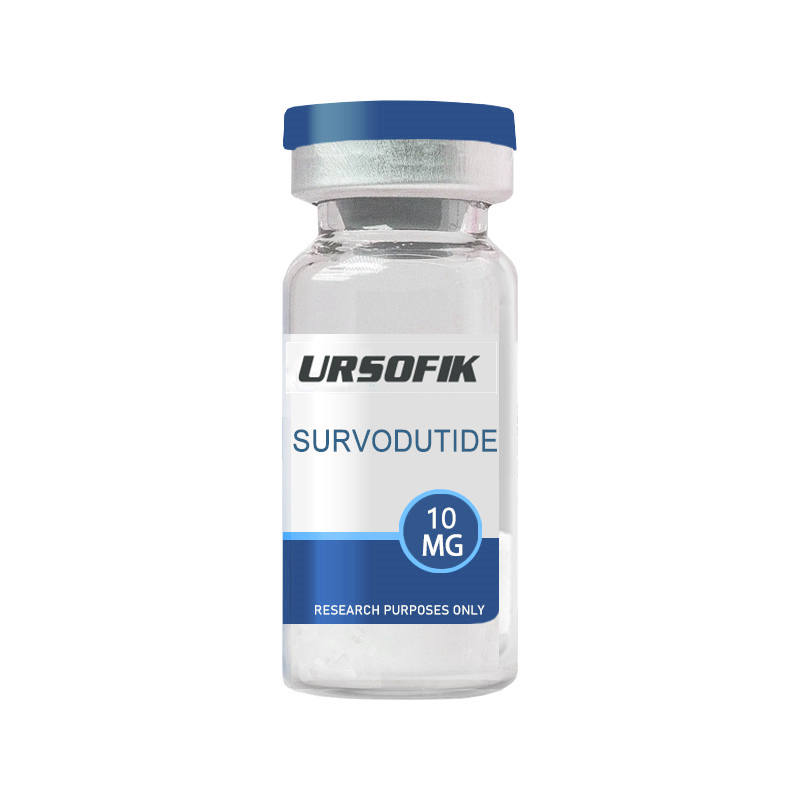
What is Survodutide? Survodutide 10MG is a research compound studied for potential benefits in obesity and glucose management. Similar to Mazdutide and Retatrutide, Survodutide shows high efficacy. Researchers hypothesize that, when combined with proper diet and exercise, it might significantly enhance obesity reduction. Additionally, studies explore its effects on metabolic regulation and cardiovascular health. How Does Survodutide Work? Survodutide stands out in obesity research due to its multifaceted mechanisms of action: Multi-Receptor Agonist: Survodutide targets multiple receptors involved in regulating metabolism. This action slows gastric emptying, reduces postprandial glucose levels, and promotes satiety. Consequently, it leads to decreased food intake and improved energy balance. Enhancing Satiety: By acting on the brain’s satiety centers, Survodutide helps reduce appetite and prolong feelings of fullness. This reduction in caloric intake supports efforts in obesity reduction. Glucose Optimization: Survodutide aids in better glucose regulation by slowing gastric emptying and modulating insulin and glucagon release. This dual action results in improved glycemic control, beneficia ...
Read More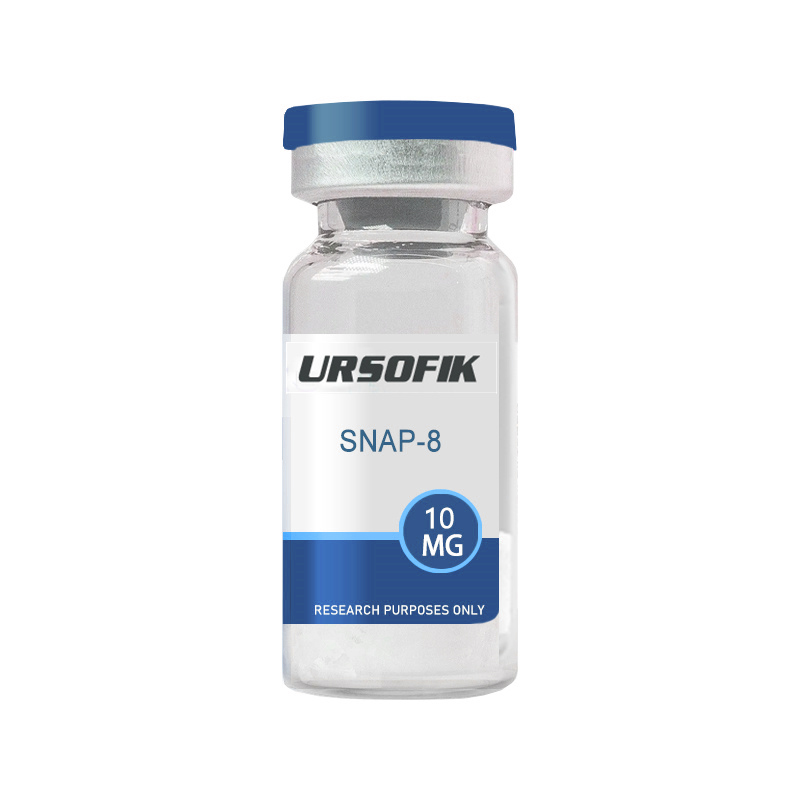
Key Features: Wrinkle Reduction: Effectively reduces expression lines and wrinkles. Botulinum Toxin Alternative: Provides a safer, non-invasive alternative to traditional botulinum toxin treatments. Skin Smoothness: Improves skin texture and smoothness. Anti-Aging: Reduces signs of aging and maintains a youthful appearance. Research Support: Studies have shown it to be effective in reducing the depth and formation of wrinkles. Description SNAP-8 is a naturally derived, non-toxic, non-invasive peptide that has been shown to have the potential to reduce facial wrinkles and improve skin appearance. It is an extension of the hexapeptide ARGIRELINE, known for its ability to modulate muscle contraction, thereby reducing the formation of fine lines and wrinkles. Structure and Modifications SNAP-8 is an octapeptide composed of glutamyl and heptapeptide amino acids. Its structure allows it to mimic the N-terminus of SNAP-25, a protein involved in the SNARE complex, which is essential for neurotransmitter release and muscle contraction. Synthesis and Studies SNAP-8 has been synthesized using a variety of methods, including solid phase synthesis. Studies have shown that it is ...
Read More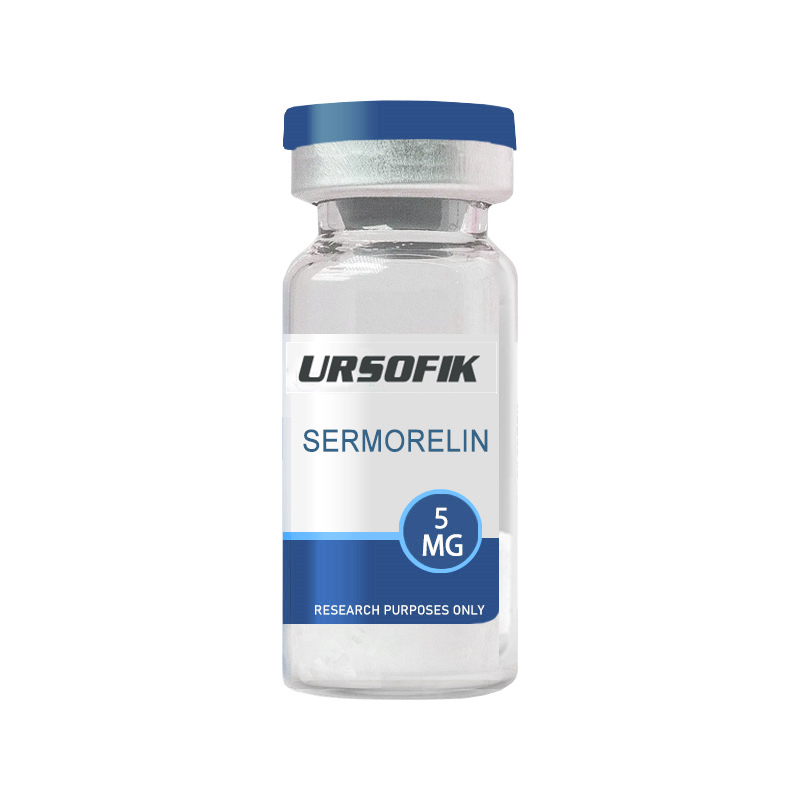
What is Sermorelin? Sermorelin is a synthetic peptide analog of human growth hormone-releasing hormone (GHRH). It was developed by EMD Serono, a German company, for the treatment of growth hormone deficiency (GHD) in children and adults. The main function of the peptide is to stimulate the body to produce and release growth hormone (GH). After clinical trials, growth hormone-releasing peptide was first approved by the U.S. Food and Drug Administration (FDA) in 1997 under the trade name "Geref" for the treatment of growth hormone deficiency (GHD) in children and adults. In 2008, the FDA stopped approving the drug for commercial reasons unrelated to safety or effectiveness. Growth hormone-releasing peptide can also be used as a diagnostic agent to evaluate whether the pituitary gland in a particular patient is functioning properly and releasing adequate amounts of growth hormone. Other applications of this peptide are currently being studied, including its role in the diagnosis and treatment of hormone deficiencies, including its role in sleep quality, heart health, and even as a new type of brain tumor treatment. Sermorelin Benefits | Clinical Trials Our team conducted a literature review us ...
Read More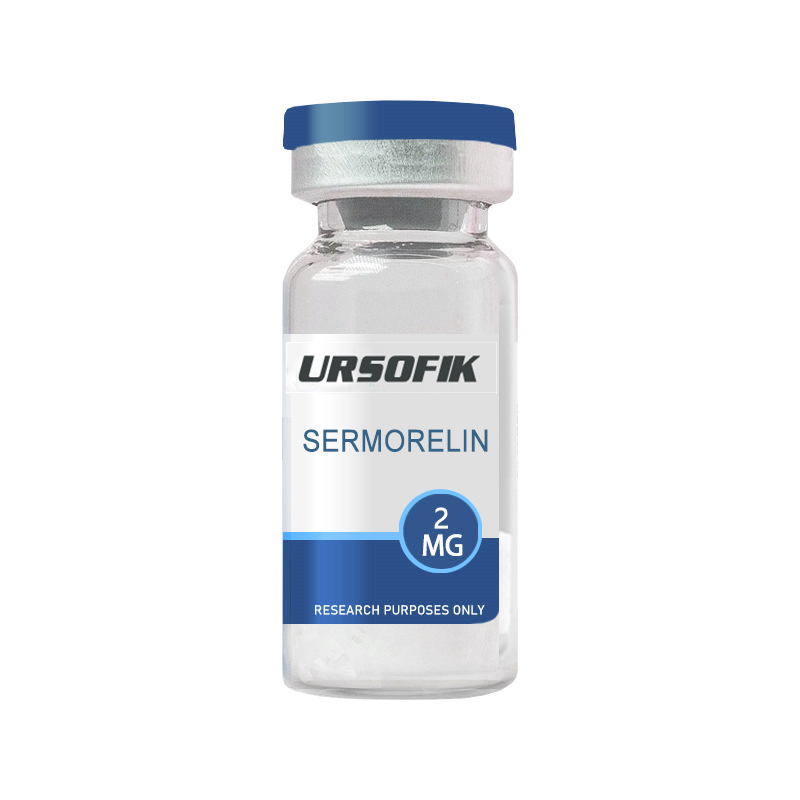
What is Sermorelin? Sermorelin is a synthetic peptide analog of human growth hormone-releasing hormone (GHRH). It was developed by EMD Serono, a German company, for the treatment of growth hormone deficiency (GHD) in children and adults. The main function of the peptide is to stimulate the body to produce and release growth hormone (GH). After clinical trials, growth hormone-releasing peptide was first approved by the U.S. Food and Drug Administration (FDA) in 1997 under the trade name "Geref" for the treatment of growth hormone deficiency (GHD) in children and adults. In 2008, the FDA stopped approving the drug for commercial reasons unrelated to safety or effectiveness. Growth hormone-releasing peptide can also be used as a diagnostic agent to evaluate whether the pituitary gland in a particular patient is functioning properly and releasing adequate amounts of growth hormone. Other applications of this peptide are currently being studied, including its role in the diagnosis and treatment of hormone deficiencies, including its role in sleep quality, heart health, and even as a new type of brain tumor treatment. Sermorelin Benefits | Clinical Trials Our team conducted a literature review u ...
Read More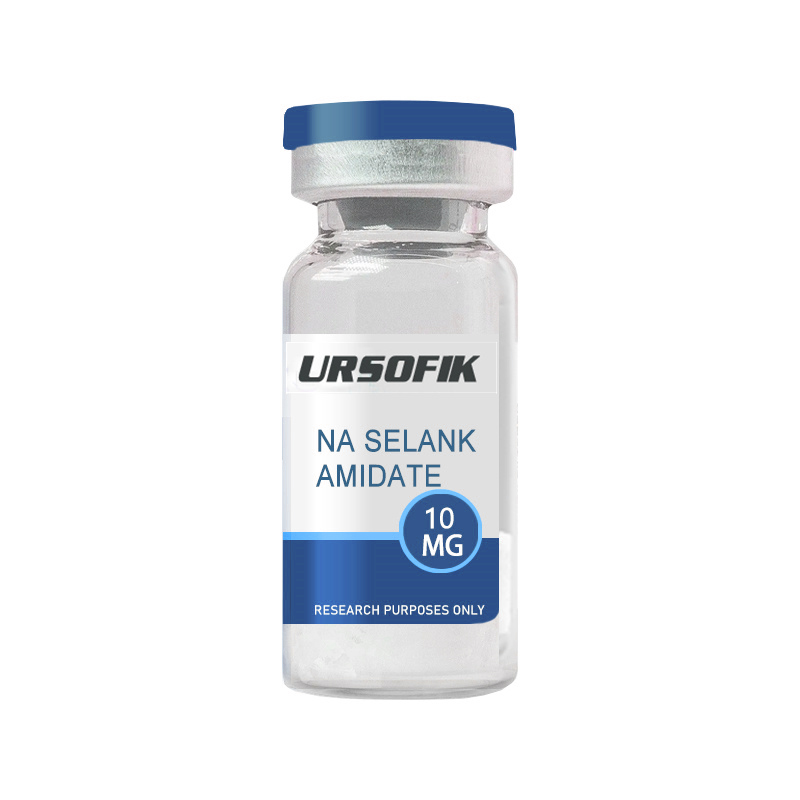
Description N-Acetyl Selank Amidate (commonly referred to as NA Selank) is a modified version of the peptide Selank. In recent years, it has received much attention for its potential anxiolytic, nootropic, and anti-inflammatory properties. NA Selank Amidate has been extensively studied in laboratory settings for its effects on anxiety, cognitive function, and neuroprotection. Structure and Modifications NA Selank Amidate is a modified version of Selank with the addition of an acetyl group to the N-terminus of the peptide chain and an amide group to the C-terminus. These modifications work together to enhance the overall stability and bioavailability of the peptide, increase its potential for use in biological studies, and theoretically enhance its potential to cross the blood-brain barrier and increase its interaction with neurotransmitters. The amino acid sequence of NA Selank Amidate is Ac-Thr-Lys-Pro-Arg-Pro-Gly-Pro-NH2. Pharmacokinetics and Pharmacodynamics NA Selank Amidate has been modified to have a longer half-life than the base Selank form, meaning it remains active longer. This is primarily due to its increased stability against degradation by enzymes and other factors. The peptide has been s ...
Read More
Description PT-141, also known as bremelanotide, is an innovative new peptide hormone therapy for men and women that improves sexual function. PT-141 is an effective and highly effective treatment for erectile dysfunction and increased libido in men, and for improving sexual arousal disorders in women. PT 141 peptide gives you desire and drive while increasing blood flow to the penis or vagina and clitoris, restoring intimacy and passion to your relationship. PT 141 addresses these issues and helps resolve sexual difficulties. PT-141 works directly through the nervous system to increase arousal, desire, and sexual satisfaction. Drugs such as Viagra and Cialis work through the vascular system and only give you an erection. However, PT-141 not only gives you an erection, it also gives you desire and drive, restoring intimacy and passion to your relationship. Benefits of PT 141 PT 141 works by stimulating melanocortin receptors in the brain. It can be injected subcutaneously or inhaled through the nose to treat sexual dysfunction. It is known to work quickly, usually in less than an hour. This peptide can offer many benefits to men and women with decreased libido and sexual performance. Treati ...
Read More
What is PEG-MGF peptide? PEG MGF, short for PEGylated mechano-growth factor, is a two-component anabolic peptide. PEG MGF is a well-known derivative of the compound insulin-like growth factor-1 (IGF-1). IGF-1 is thought to play an important role in the regulation of growth hormone (GH). In addition, this chemical may also help promote bone and tissue growth. PEG MGF promotes muscle growth by prompting various receptors to drive myoblasts to divide. Several studies have also shown that PEG MGF can increase the number of muscle stem cells that bind to existing muscle cells, thereby promoting muscle growth. PEG MGF has a short half-life of about 5 to 7 minutes. To address this, this experimental chemical is PEGylated. PEGylation is performed by adding polyethylene glycol (PEG) to the peptide. By adding the PEG group, the half-life of MGF can be safely and effectively extended to 48-72 hours. Possible Applications of PEGylated Mechano-Growth Factor Peptides: PEG MGF Peptides and Bone Repair In the animal model mouse, MGF treatment improved the migration of chondrocytes (cells responsible for cartilage formation) from the bone to the cartilage where they are needed. PEGylated Mec ...
Read More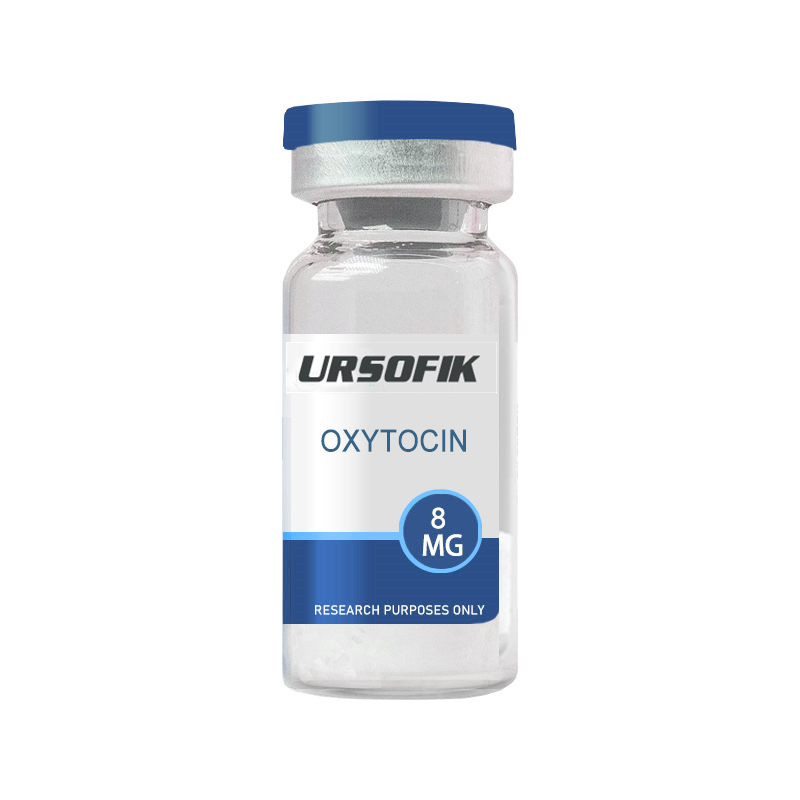
What is oxytocin? The peptide hormone is made up of 9 amino acids. It is produced in the hypothalamus, an area of the brain that controls heart rate, blood pressure, and digestion. OT is released into the bloodstream by the posterior pituitary gland. Oxytocin was discovered by Sir Henry Dale in 1996. He found that extracts from the posterior pituitary gland of humans caused the uterus of pregnant cats to contract. Sir Henry Dale also coined the name oxytocin, which means "quick labor" in Greek. This peptide hormone controls many functions. It has an impact on labor, milk secretion during breastfeeding, and bonding with newborns in humans. It also plays an important role in sexual arousal, romantic attachment, and other social interactions. It is also known as the "love hormone." A 2012 study found that levels of this hormone were significantly higher in newly-in-love people than in singles. The findings suggest that it may play an important role in the initial stages of a relationship. Pure Rawz sells this product for research use only. How does oxytocin work? Research suggests that it interacts with neural pathways responsible for processing motivation-related stimuli. In particular, ...
Read More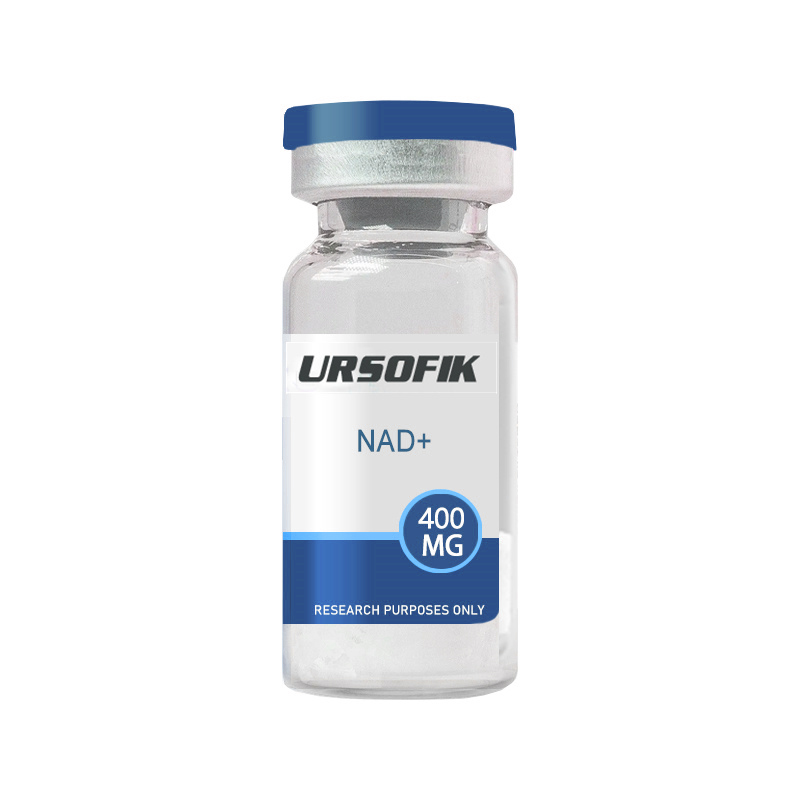
NAD+ Research A large number of animal and human studies have been conducted on the potential applications of NAD+. Here are some relevant findings: NAD+ Anti-Aging Many people are looking for anti-aging secrets, and a study found that nicotinamide adenine dinucleotide (NAD+) levels decline with age, which may cause cell damage and may shorten lifespan. NAD+ acts as an enzyme cofactor and substrate for a variety of regulatory proteins in many important biological pathways. A large number of studies have shown that increasing NAD+ levels in tissues or cells can slow the aging process. The safety and efficacy of NAD+ have been clinically studied. There is evidence that supplementing NAD+ precursors or inhibiting NAD+ degradation may enhance metabolic activity. Studies have shown that supplementing NAD+ precursors can slow the aging process in mice. To date, the anti-aging properties of NAD+ have not been confirmed in humans. The role of NAD+ in neurodegenerative diseases Several articles mentioned that NAD+ depletion has been observed in both normal and accelerated aging. Neurodegeneration is seen in several accelerated aging diseases, including ...
Read More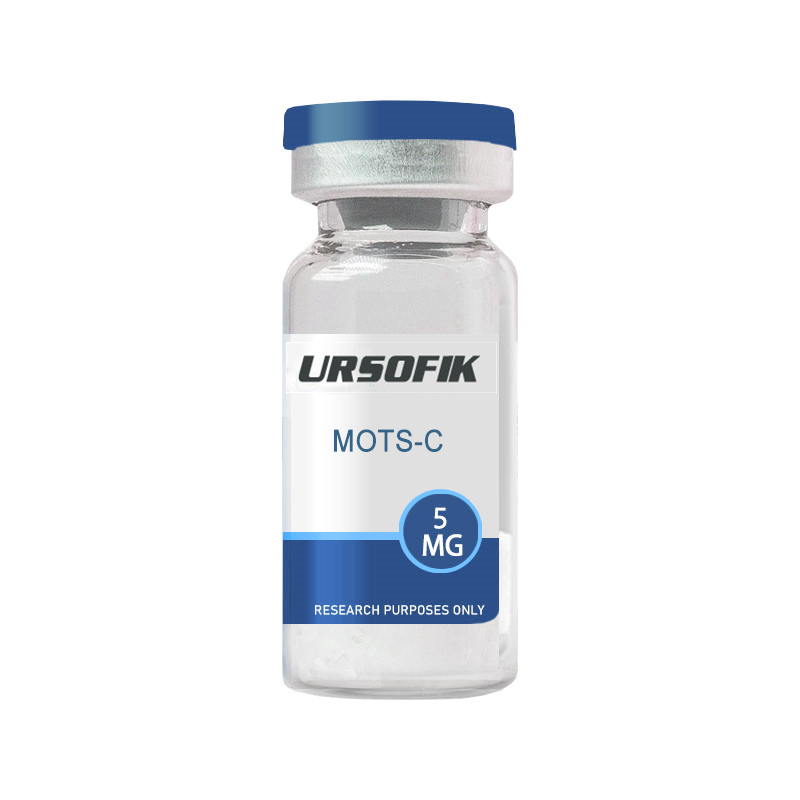
Mechanism of Action: While the precise mechanism of action of MOTS-c is currently under investigation, it is hypothesized that its metabolic effects are mediated through its translocation to the nucleus and subsequent activation of AMPK. Notable Studies: · MOTS-c peptide regulates adipose homeostasis to prevent ovariectomy-induced metabolic dysfunction. · The mitochondrial-derived peptide MOTS-c promotes metabolic homeostasis and reduces obesity and insulin resistance. · MOTS-c Functionally Prevents Metabolic Disorders. Metabolites. What is MOTS-c? MOTS-c, is a mitochondrial-derived peptide, consisting of 16 residues encoded by the 12S rRNA region of the mitochondrial genome. This means that the genetic information that is translated into the peptide’s amino acid sequence has not been processed into a strip of mRNA. Rather, the peptide is translated from a strand of rRNA whose main role is not to carry genetic information but to help ribosomes work in processing such information. MOTS-cwas discovered in 2015 and has since attracted attention for its potential role in metabolic regulation and age-related ...
Read More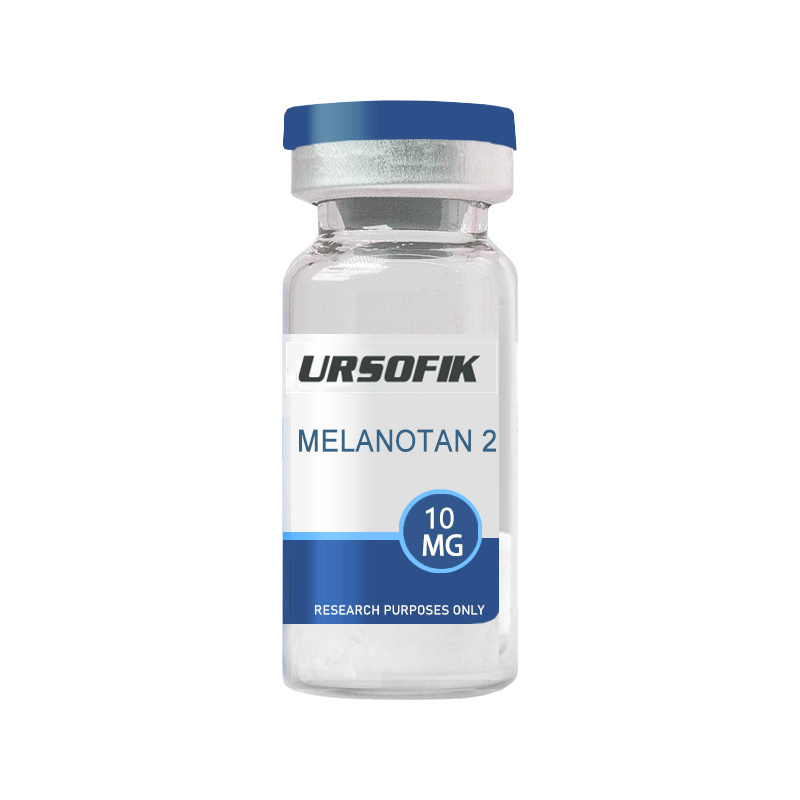
Mechanism of Action: Melanotan II is an agonist of melanocortin receptors 1 and 4 (MC-1R and MC-4R), which respectively regulate melanin production and male erectile function. It is also believed to stimulate MC-3R, which affects appetite and energy levels. Notable Studies: · Evaluation of melanotan-II, a superpotent cyclic melanotropic peptide in a pilot phase-I clinical study · Melanocortin receptor agonists, penile erection, and sexual motivation: human studies with Melanotan 2 · An unhealthy glow? A review of Melanotan use and associated clinical outcomes What is Melanotan 2? Melanotan 2 is a synthetic analogue of alpha-melanocyte-stimulating hormone (α-MSH). The molecule was first developed in the 1980s by University of Arizona researchers, who were looking to clarify the nature and role of the melanocortin receptors in physiological functions. Namely, the peptide was intended to be used as a sunless tanning agent, but was subsequently found to strongly affect sexual function and appetite . Melanotan 2 (MT-II) should not be confused with another α-MSH analogue, mela ...
Read More

